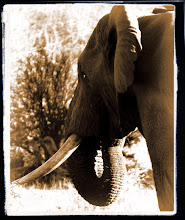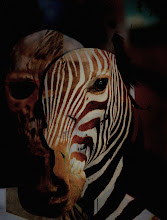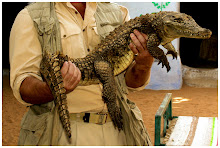Hugh Glass
I know for sure that some of you will very much indeed enjoy the Biographical Notes about Hugh Glass. From the Wandering Lizard I read as follow:
Wandering Lizard
History -Biographical Notes - Hugh Glass
Hugh Glass was a man of mystery and legend. We know that he actually lived and we know the legend that grew up around him, but we don't know how much of the legend is fact and how much is fiction. As with all good legends there are many variations to the narrative, but the following outline will give the reader the basic elements of this incredible story.
Hugh Glass is believed to have been born sometime around 1783 in Philadelphia, Pennsylvania, the son of Irish immigrants. He went to sea at an early age and proved to be a good seaman. As a young man he was captured by pirates operating under the command of Jean Lafitte off of the southern coast of Texas around 1816. He was forced to become a pirate and participated in a number of acts of piracy, but sometime in 1818 he escaped by swimming two miles to shore near present day Galveston, Texas. He avoided contact with the local Karankawa Indians who were hostile to the pirates that operated off their shore and began walking north without map, supplies, or weapons.
He managed to live off of the land and moved far inland before being captured by Pawnee Indians. The Pawnee adopted him and taught him a great deal about living in the wilderness. During his stay with the Pawnee he was in at least one fight wherein he killed several enemy Kansas warriors and captured a very modern Hawken rifle. Later he used the rifle to kill a grizzly bear and won the name "Ta-Ka-Kur'uks" (White Bear or Grizzly) as a result. Glass took an Indian wife and lived with the Pawnee until sometime in 1821 when the Pawnee were invited to send a delegation to St. Louis to meet with United States authorities. Glass accompanied the Pawnee delegates to St. Louis where he remained and took up life as a "white man.".
In 1822 Glass joined William Ashley's newly formed Rocky Mountain Fur Company and early in 1823 headed up the Missouri River along with a number of men who were to become famous participants in the fur trade including: Andrew Henry, Jeddediah Smith, Ed Rose, Thomas Fitzpatrick, James Beckworth, William Sublette, Moses Carson, and Jim Bridger. On May 31, 1823 the party stopped at an Arikara village where Ashley traded gunpowder for horses. That evening one of the trappers was killed in an argument over an Indian woman. The next morning the Ashley party was attacked by the Arikara and lost several men before escaping down the river. Hugh Glass was recognized by two of the Arikara who had met him while he was living with the Pawnee. Glass killed one of them and the other escaped. During the escape Glass was shot in the leg.
Following their escape Ashley sent word back down river to inform the authorities of the Arikara attack and Colonel Henry Leavenworth responded from Fort Atkinson with 240 troopers. In August Leavenworth's force, reinforced with fur trappers and a very large number of Sioux Indians, attacked the Arikara. After an indecisive battle, during which one of the Arikara leaders was killed, a peace was negotiated and the attack terminated to the disgust of the trappers and the Sioux who wanted to wipe out the entire Arikara village. That night the Arikara abandoned the village and escaped. The next morning Colonel Leavenworth's force returned to Fort Atkinson and two Missouri Fur Company trappers, Angus McDonald and William Gordon burned the village.
After the burning of the Arikara village Andrew Henry and fourteen others, including Glass, parted company with Ashley and struck off on their own toward the Yellowstone River. Hugh Glass frequently traveled separately and always made camp apart from the rest of the party even through Henry disapproved. One morning Glass was picking berries away from the main party when he was confronted by a female grizzly bear with cubs. The grizzly attacked and Glass fired point blank with his .54 caliber Hawken. The bear continued its charge and closed on Glass before he could escape. He used his knife and eventually was able to kill the bear but not before it had nearly done him in. Henry's party heard his cries for help and found him bleeding from massive wounds all over his body. They sewed him up as best they could, but felt that he would surely die within a day or two. Two men - Jim Bridger and John Fitzgerald - were designated to stay with him until he died and give him a decent burial.
Fitzgerald was extremely worried that hostile Indians would find them and, after waiting beside a comatose Glass for five days, convinced the younger Bridger that they must leave at once. Because they were certain that he would die, Bridger and Fitzgerald took Glass's Hawken, his pistol, his knife and all of his other supplies and they left him lying next to his freshly dug grave. Glass did not die. Instead he recovered sufficiently to discover that he had been abandoned, He set his broken leg and angrily took stock of his situation. Even though the nearest civilization was Fort Kiowa which was about three hundred miles away he began crawling toward it. He ate whatever he could find including insects, berries and dead animal carcasses. At one point he was able to beat off a pack of wolves from a freshly killed buffalo calf. He traveled as much as he could by water but had to be careful that he was not seen by hostile Indians. He cared for his wounds as best he could using Indian herbal remedies, but he was unable to reach the wounds on his back where he could feel maggots eating his flesh.Glass fashioned a crutch and was able to walk for increasingly long periods of time so that his rate of progress gradually improved. Late in September he made it back to the burned out Arikara village where he was able to find a cache of corn. While at the village, a party of Sioux discovered him and decided to take him back to their village. They were mounted and permitted Glass to ride during the three day trip to their village. Once at the village he was cared for and nursed back to health. With the assistance of the Sioux, Glass was able to return to Fort Kiowa on October 8, 1823. Because he was associated with Ashley's fur company he was able to reoutfit himself on credit. Three days after arriving at Fort Kiowa, Glass joined a small party led by Toussaint Charboneau that was headed north to trade with the Mandan Indians. A few days later the party was attacked by Arikara and all but Charboneau and Glass were killed. This time Mandan Indians helped Glass escape the Arikara.
Glass, alias Grizzly, was now famous throughout the Indian Nations for his adventures with giant grizzly bears and for the fact that the Arikara had repeatedly tried unsuccessfully to kill him. Because of his celebrity status, the Mandan insisted that he stay with them for a much longer time than he wanted. It was not until November that they assisted him in traveling to Fort Tilton which was on his way to Fort Henry where he hoped to catch up with and kill Fitzgerald and Bridger. Even though winter snows had already begun to fall he was unable to remain at Fort Tilton because of the fear that he would attract an all-out attack by the Arikara, however William Tilton (Columbia Fur Company) agreed to outfit him with the items that had been lost to the Arikara as long as he would immediately leave the fort. Once reequipped, Glass departed on foot for Fort Henry. During this month long trip Glass once again had to live off of the land, sleep in snow caves to keep warm, and travel on foot through deep snow without proper maps. He arrived during the second week in December but found the fort deserted. A note painted on a wall indicated that Henry and his party had moved upstream to the mouth of the Big Horn River.
Glass arrived at the new Fort Henry at the end of December. It was evening when he arrived. He announced himself as Hugh Glass and explained that he was there to kill two of the Henry party - Bridger and Fitzgerald. Fitzgerald was not at Fort Henry but Bridger was. When Bridger first saw Glass he thought that he was seeing a ghost. After determining that Glass was indeed alive he offered profuse apologies and Glass relented saying that he knew that it was Fitzgerald that had convinced Bridger to abandon their charge. Once Henry was satisfied that Glass was not going to harm Bridger he invited him to participate in the New Year's celebration that was just getting started. Henry appears to have believed that although Fitzgerald and Bridger had done wrong to leave Glass while he still lived, Glass had brought his troubles on himself by remaining aloof from the rest of the party and was not particularly sympathetic. Nevertheless Henry accepted Glass back and on March 27, 1824, sent him and four others to St. Louis with a report for Ashley.
A few days after leaving Fort Henry, Glass and his party ran into Arikara Indians. Two of the party were killed and Glass was separated from the other two survivors. He was once again alone in the wilderness without any supplies or equipment except a knife and tomahawk. He headed overland for Fort Kiowa arriving in the middle of June. There he read a newspaper account of his death at the hands of the Arikara as told by the other two survivors. Once again he was outfitted on credit and learned that Fitzgerald had joined the army and was stationed in Fort Atkinson. Glass left at once and reached Fort Atkinson in late June. Captain Bennett Riley was the officer in charge at the time when Glass asked to see Fitzgerald and explained that he was going to kill him. Bennett told Glass that he would arrest him and see him hanged if he did that. Once reassured that Glass would not immediately harm Fitzgerald he permitted the meeting of the two men and demanded that Fitzgerald return the Hawken to Glass. Glass warned Fitzgerald never to leave the army and departed.
Following the events at Fort Atkinson, Glass returned to a life of trapping in the Rocky Mountains and was once again wounded in 1825, this time by a Shoshone arrow in the back. He was transported seven hundred miles via river before someone could be found who could remove the arrow head. In 1833 Glass, Ed Rose, and Menard were ambushed by Arikara Indians on the Yellowstone River. A few days after the incident Johnson Gardner, a friend of Glass, captured several Arikara Indians in possession of some of Glass's equipment. Glass himself was never seen again and is presumed to have died at the hands of his old enemy the Arikara.
Once again it must be noted that much of this story is based on hearsay and is not well documented. Difficult as it is for a person living in the twenty first century to believe, most of the main elements of the story are probably true and even if Hugh Glass did not do some of the extraordinary things recounted here it should be remembered that it is known that other men living at the time did very similar things.
































































































































































































































.jpg)










.jpg)























































Heck! they bred 'em tough in those days!
ReplyDeleteThink they coined the term, tough as an old boot after Glass.
ReplyDelete